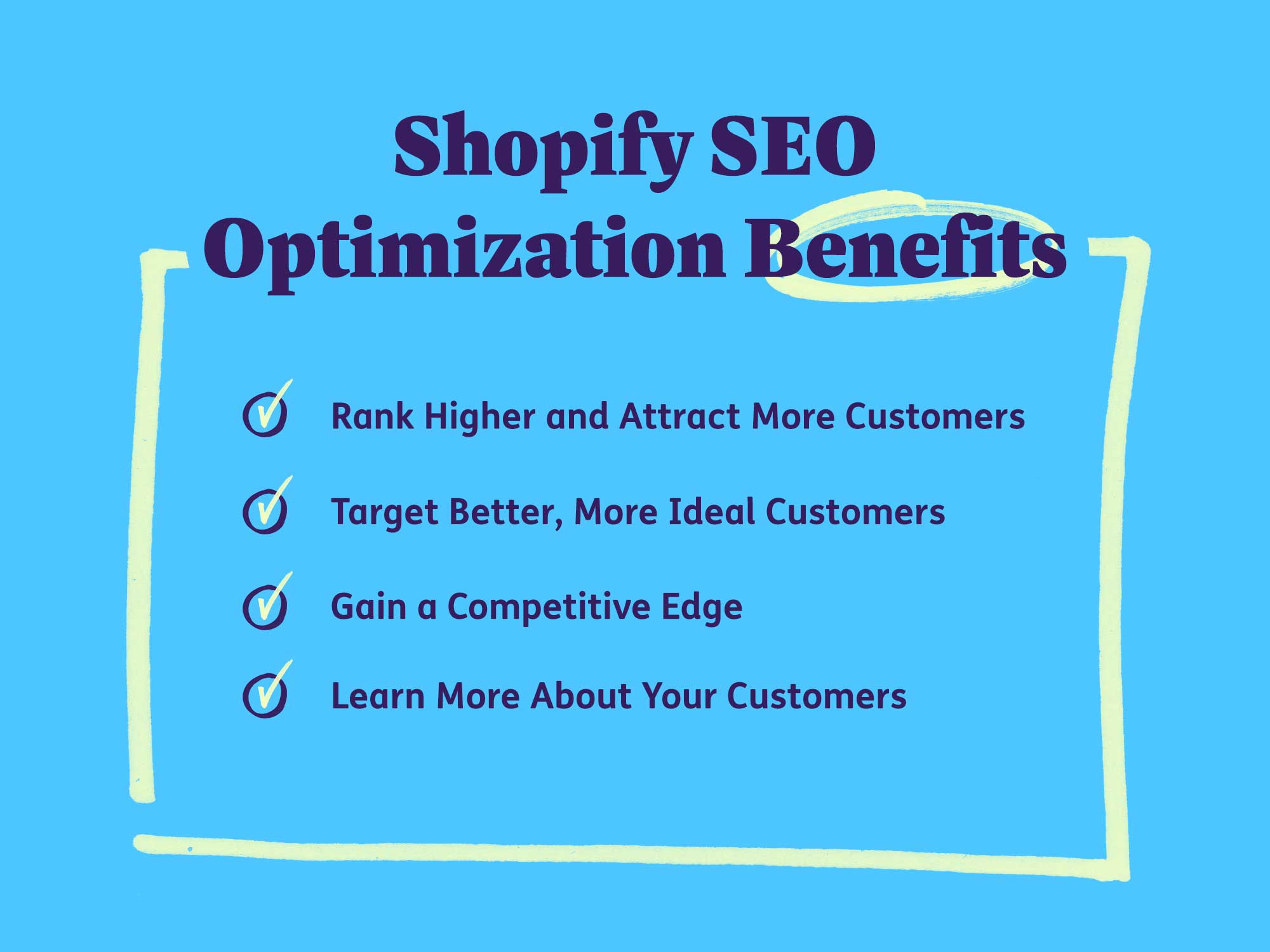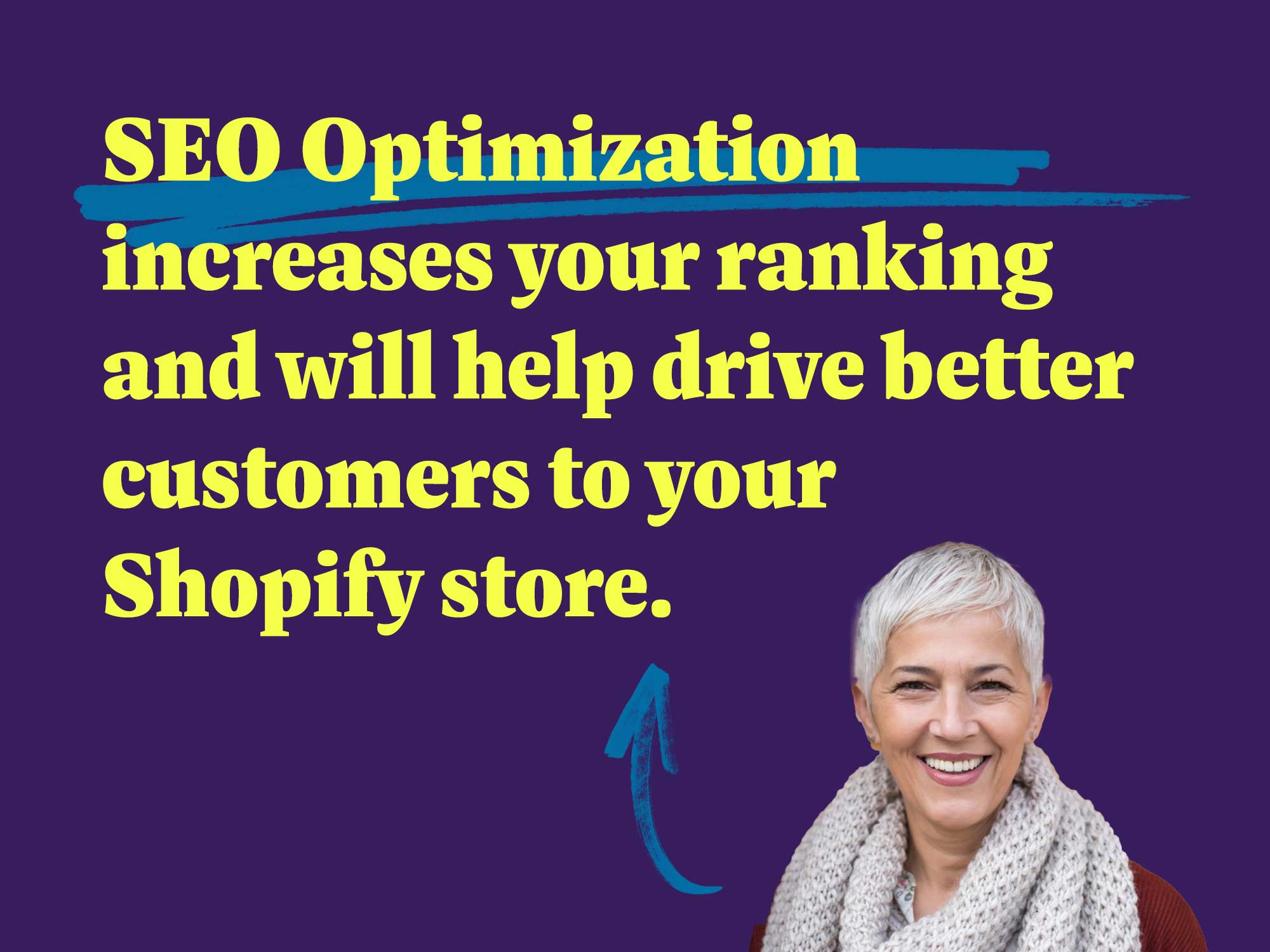How Shopify SEO Optimization Can Make Your Online Store Better
When you hear “SEO”, you probably imagine your store taking the top spot on Google and opening a floodgate to a ton of new customers.
Although this is true, there are actually many more benefits that come with implementing Shopify SEO Optimization. This makes it even more worthwhile to spend the time on improving SEO. In this article, I’ll explain why.
First, it’s important to know that most SEO activities will fall into one of two categories: on-site SEO and off-site SEO. On-site SEO lays the foundation for your website, and it’s usually a good idea to prioritize on-site SEO first before more advanced off-site SEO strategies. If you’re new to this, check out our beginner’s guide to on-site SEO for a comprehensive overview to get you started.
As such, the benefits I’ll be focusing on here relate to improving your on-site SEO. I discuss how it will make your website better than your competitors. By optimizing your on-site SEO your store can become more findable, more usable, and more appealing to the right customers.

1. Rank Higher and Attract More Customers
Earlier this year I surveyed about 600 Shopify store merchants to learn more about what challenges they face running a Shopify store. One of the top problems merchants would report was attracting and retaining new customers.
There are multiple ways you can attract new customers to your online store, however one of the fastest and easiest ways to do this is to make improvements to your store’s on-site SEO.
Improving your on-site SEO will help search engines better understand your website and over time will help you improve your ranking. Improving your ranking on search engines like Google will gain you more visibility and you’re likely to get more customers finding you when they search for items or topics related to your store.
Organic search is responsible for 53% of all site traffic, compared to paid ads which is only 15%. If you’re not ranking well organically, then you’re not getting your fair share of the market as it exists online, and other stores will eat your fair share for you.
2. Target Better, More Ideal Customers
In Shopify’s guides to help merchants launch their stores, Shopify emphasizes the importance of identifying your target audience.
By investing some time in your store’s on-site SEO, you’ll have an opportunity to update your meta titles, descriptions, and website content in a way which is tailored to the specific audience you want to reach. In doing so, you’ll attract better, more ideal customers to your store over time.
One of the pitfalls Shopify owners might face is casting too wide of a net. Trying to market to everyone in general will dilute your marketing efforts. Your messaging will be less effective overall, your brand and product line-up will be less appealing, and you’ll end up with lower conversion rates.
Focusing on a specific type of customer allows for tailored messaging that better resonates with and attracts the ideal audience. Your store will be more appealing, more memorable, and this will result in increased sales and customer loyalty.
A good example of this is when I’m shopping for my 18 year-old cat. As she ages and her stomach becomes more sensitive to the common ingredients found in regular cat food, I find myself searching for stores that cater to healthier food options for cats. Some stores I’ve found are 100% dedicated to offering foods that meet natural, holistic criteria and it’s these stores I know I can turn to to find something that won’t upset my cat’s stomach.
Catering to a specific demographic (cat owners who want healthy food and treats for their cats) know that I might be googling something more specific when I search for cat food like “cat food for inflammatory bowel disease”. They can update their overall SEO strategy to find customers like me, who are the best fit for their stores.
If you’re struggling to understand who your best-fit customer is, a good place to start is to create buyer personas: fictional representations of a business’s ideal customers. In this article, Shopify says “When a customer feels like a product is a perfect fit, they’re more likely to share it with others, pay a premium, and be more patient with imperfections.”
Once you do this and you better understand your ideal customer, you will be able to craft better meta titles and descriptions that will improve your on-site Shopify SEO optimization and attract the right kinds of customers to your store. Attracting best-fit customers to your store is valuable because they’ll be the quickest to purchase and most likely to remain loyal.
3. Gain a Competitive Edge
With on-site Shopify SEO Optimization, you will fix common issues that most other merchants are likely ignoring. Improving your on-site SEO will give you a competitive edge and help you climb to the top of search engine rankings.
Improving your on-site SEO will give you a competitive edge and help you climb to the top of search engine rankings.
Outranking competitors is important because ranking first in search engines can get you up to 30% more daily traffic. Most of the traffic from organic search results goes to the top 3 spots. Then after that, click-through rates have a steep delcline.
Improving your on-site SEO will involve updating your meta titles and descriptions, alt text, and URLs to be more descriptive. This will make your website more findable by search engines and users and will help improve the chances of your website climbing to these top 3 spots.
It’s also important to note that broken links can penalize your website’s performance in search engine results, so by fixing these, you will have a competitive advantage over other stores that do not update their website regularly enough to fix broken links.
As someone without a ton of technical knowledge and experience, I can say that fixing on-site Shopify SEO issues is relatively straightforward and can be done by the average merchant.
4. Improve User Experience
User experience is an important piece of any successful Shopify website. Websites that are difficult to read and hard to navigate typically suffer from high bounce rates, abandoned shopping carts, and less website traffic overall.
Good usability will mean that your website has faster page loading time, easy-to-use site navigation, an organized hierarchy of pages on an HTML sitemap, and descriptive text that helps users understand what the content of your website and each page is about. This means that people will stay on your website, browse products, and make purchases.
When you spend time improving Shopify SEO Optimization, by default you are already doing the very things that will improve user experience. Compressing images will keep load times at bay, better meta titles and descriptions will help people better understand your website, and adding an HTML sitemap will help users navigate the pages on your website.
When I’m looking for services on Google from a new provider, I will always read the meta description before clicking the click. A user-friendly meta title and description will clearly communicate the content of your page to users like me so I know it’s worthwhile to click.
Recently I was searching for “no-rinse, foam air conditioner coil cleaners” – a simple product but with a lot of criteria. Some meta descriptions indicated that the coil cleaner was no-rinse, others would say foam. But I only clicked on those that said no-rinse and foam, even if they were a little lower on the list.
This is a good example of why meta titles and descriptions are important for the user experience, and how poor meta descriptions could lead to a loss of click-throughs.
5. Learn More About Your Customers with Better Analytics
One of the most valuable pieces of information for any business owner is data on their customers. Without data, it feels like you’re shooting in the dark when you’re trying to craft the right marketing strategy for your customers.
I once worked with a Shopify store that sold paint online. They looked at their analytics and were surprised to learn that although they had site visitors, people were not browsing the furniture paint section on their website. This surprised the owner since she often hosted furniture painting workshops for her customers.
Analytics are important because they help you understand behaviour like this, and help you make changes to the layout or usability of your website. Analytics tools such as Google Search Console and Shopify Analytics will show you how many people are visiting your website compared to how many are purchasing.
When you improve your on-site SEO, you’ll increase the number of visitors to your website overall. This will make your analytics data richer because you’ll have a bigger pool of data to work with.
By improving your store’s on-site SEO, you create a more user-friendly, engaging, and efficient site that attracts and retains visitors, leading to better analytics and more informed decision-making.
Let’s say you notice a high number of visitors but low conversion rates, perhaps you need to update your product descriptions so they’re clearer. Or make updates to the menu if you suspect your website may be difficult to navigate.
On the other hand, if you see high engagement on certain pages or products, you can take advantage of that by promoting them more prominently on the home page.
In the paint store example, the client updated her home page with a call-out to the furniture paint section on her website. This change would help her sell more furniture paint in the future.
If your on-site SEO is poor and you have fewer site visitors, then your analytics won’t paint the full picture and you may not have the data you need to make informed decisions.

Conclusion
The great thing about improving on-site SEO is that you can take action to improve most website issues in one day.
The most common issues that merchants have can be fixed natively using Shopify’s built-in features. However the best, most efficient way to improve your Shopify SEO optimization is with the use of an app.
On the Shopify app store, you will find an overwhelming large number of apps that will help you fix your on-site SEO. Which app should you choose?
After reviewing the top 6 Shopify SEO optimization apps that will help you fix your on-site SEO, we found that SEO Doctor was the best app for this. The app helps you easily identify and fix issues with a guided checklist, save time with automation, and track your progress with a dynamic overall score.
This will help you increase your organic ranking and in turn, will help you drive more customers to your website.
Setting up and using SEO Doctor is easy, and as long as you have the app installed, SEO Doctor will be running constant checks on your website for SEO issues so you’ll never have to worry about on-site SEO again.
SEO Doctor
Use the SEO Doctor for Search Engines app for access SEO tools to audit and optimize your store on autopilot. Improve your search ranking and sell more.
